Which Plant Gives More Flowers? A Guide to Blossom Abundance
If you love gardening, you’re probably always looking for plants that can produce a wealth of colorful blooms. One plant that stands out for flowering abundantly is the Marvel-of-Peru, also known as Four O’clock. This plant blooms year-round, offering a range of colors like red, white, yellow, and pink all year long.
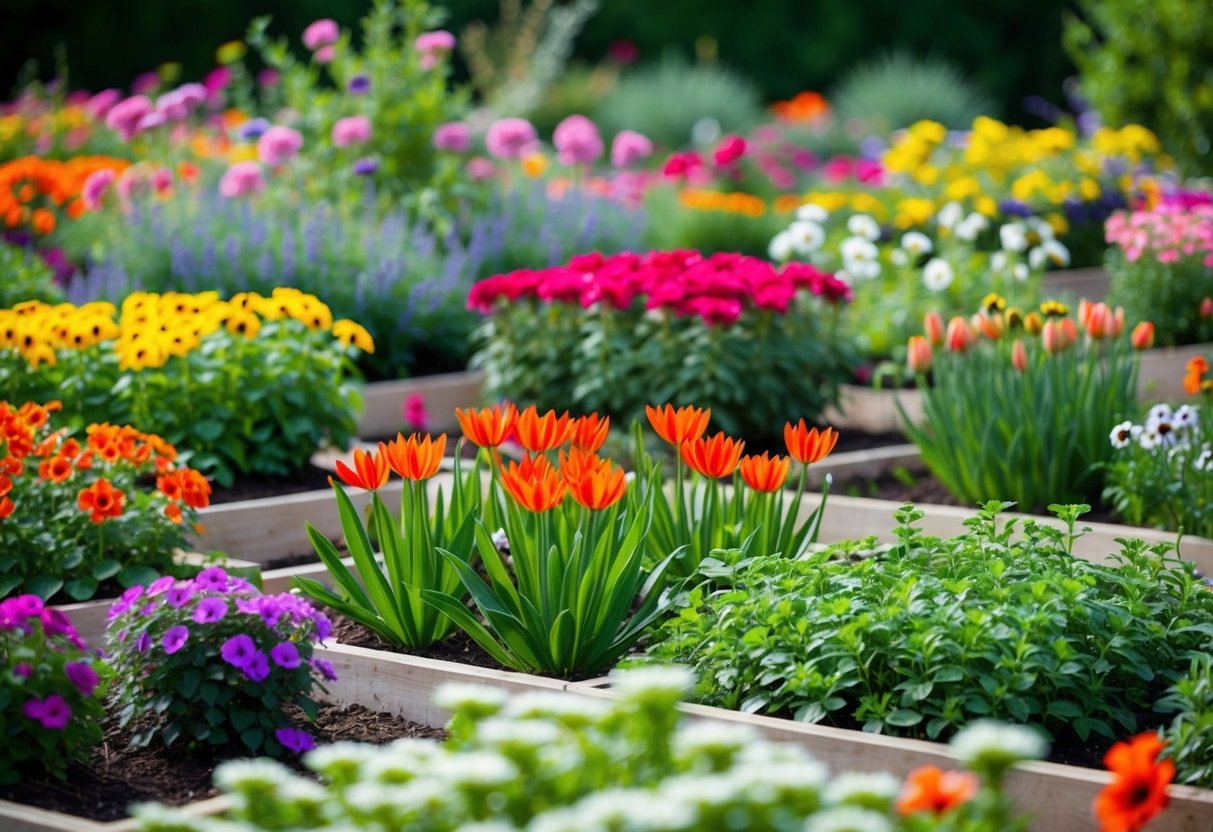
Another great choice for a garden flush with blooms is lavender. Not only is lavender beautiful, it fills your space with lovely purple flowers and a soothing fragrance. You can grow lavender successfully as a perennial in planting zones seven through nine.
Don’t overlook hardy sage if you’re aiming for a garden that’s both fragrant and visual. Hardy sage blooms for weeks throughout the summer, filling your garden with color and a woody aroma when its leaves are crushed. These plants are drought-tolerant too, making them a resilient option for sustained blooms.
The Fundamentals of Flowering Plants

Flowering plants brighten up your garden with vibrant blooms. Their growth relies on efficient photosynthesis and proper soil conditions to thrive.
Understanding Photosynthesis and Plant Growth
Photosynthesis is the process where plants transform sunlight, water, and carbon dioxide into food. This is crucial for flowering plants as it fuels growth and flower production. When sunbeams hit the leaves, they capture energy that turns raw elements into nutrients. Healthy growth means more flowers for you to enjoy.
The amount of sunlight your garden receives can directly impact how many flowers bloom. If your flowering plants get enough sun, they can absorb more carbon dioxide, helping them photosynthesize effectively. This results in more energy for flowering, giving your garden a bolder look with vibrant colors.
Soil and Nutrients for Optimal Flower Production
For full blooms, your plants need rich soil teeming with nutrients. Soil with plenty of organic matter and nitrogen provides essential support. Well-drained soil helps fight off root diseases which can stunt growth. Using quality compost boosts nutrient levels and enriches the soil structure.
Remember, each flower has specific nutrient needs. Adding fertilizers rich in the right elements can make a huge difference. Consider checking the soil’s nutrient levels before planting. This helps ensure that your flowers receive what they need, leading to a more colorful and abundant garden.
Categories of Flowering Plants
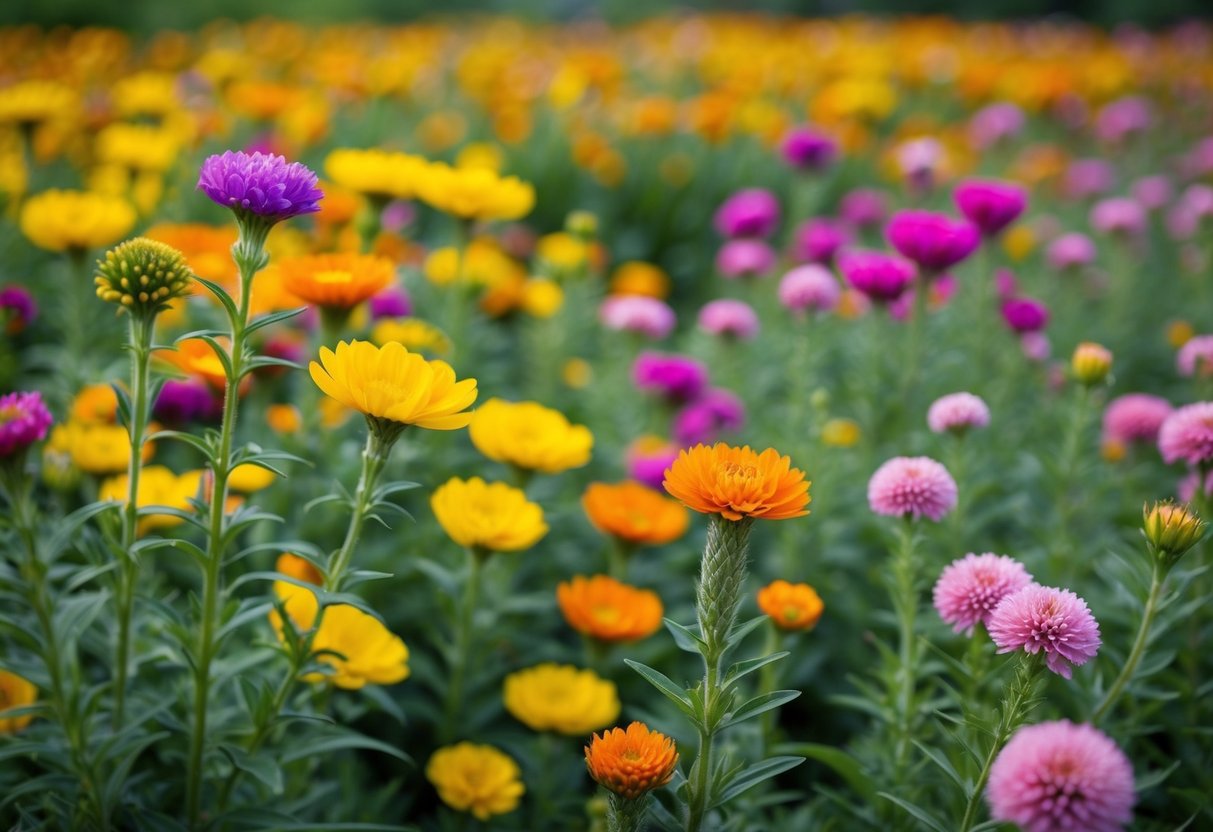
When choosing plants for your garden, you can select between annuals and perennials. Each type has its unique characteristics and benefits. Understanding these categories helps you decide which plants will supply the most blooms and best suit your needs.
Annuals Versus Perennials
Annuals complete their life cycle in one growing season. They bloom throughout the season, providing vibrant color. Since they die after one season, you plant them anew each year. Examples include marigolds and petunias.
Perennials, on the other hand, return year after year. They survive through various seasons by going dormant during unfavorable conditions. While they might not bloom as continuously as annuals, they offer long-term beauty and often strengthen over time. Think of plants like asters, peonies, and black-eyed susans.
Perennials are a great choice if you want a stable garden with less replanting each year. You can mix both types for a landscape that offers vibrant colors and reliable growth.
The Importance of Perennial Flowers
Perennial flowers provide lasting beauty and structure to gardens. They return without replanting, making them a cost-effective choice. These plants can adapt well to their environments and often require less maintenance than annuals.
Varieties like tickseed and black-eyed susans adapt to different soil and sunlight conditions. They offer diverse shapes, sizes, and colors, adding visual interest to any garden space.
Choosing perennials can be an eco-friendly decision. Their long lifespan means less soil disturbance, which can preserve soil quality. By investing in perennials, you ensure that your garden produces vivid blooms year after year with minimal effort.
Indoor Plants for Healthier Air
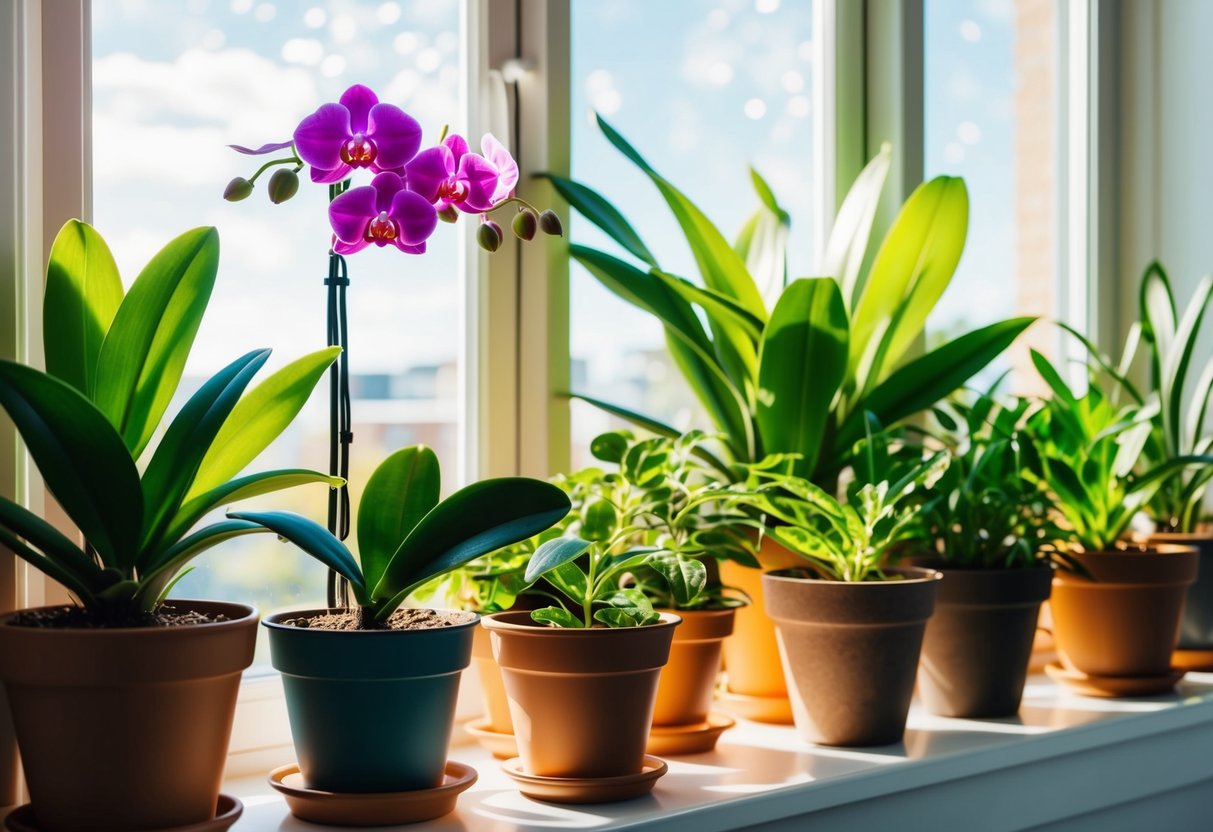
Adding indoor plants to your home can improve air quality and create a fresher environment. They absorb toxins and provide oxygen, making your space healthier and more inviting.
Air-Purifying Indoor Plants
Certain plants are known for their ability to purify the air. A peace lily is a top choice because it removes toxins like formaldehyde, benzene, and trichloroethylene. Peace lilies are easy to care for and thrive in low-light conditions.
The areca palm is another option, known for removing indoor air toxins and adding humidity. It’s especially good at filtering out toluene and xylene, which are common pollutants.
An aloe vera plant is excellent at absorbing carbon monoxide and formaldehyde. It’s a hardy plant that doesn’t require much maintenance.
Other great options include the weeping fig, which can handle volatile organic compounds, and the snake plant. The snake plant is known for releasing oxygen at night, making it great for bedrooms.
Consider adding a spider plant as well. This plant is famous for combatting carbon monoxide and other pollutants, and it’s safe for pets, making it a versatile choice.
These plants not only beautify your home but also contribute to clean air, promoting better health and well-being.
Gardening for Enhanced Oxygen and Flowers
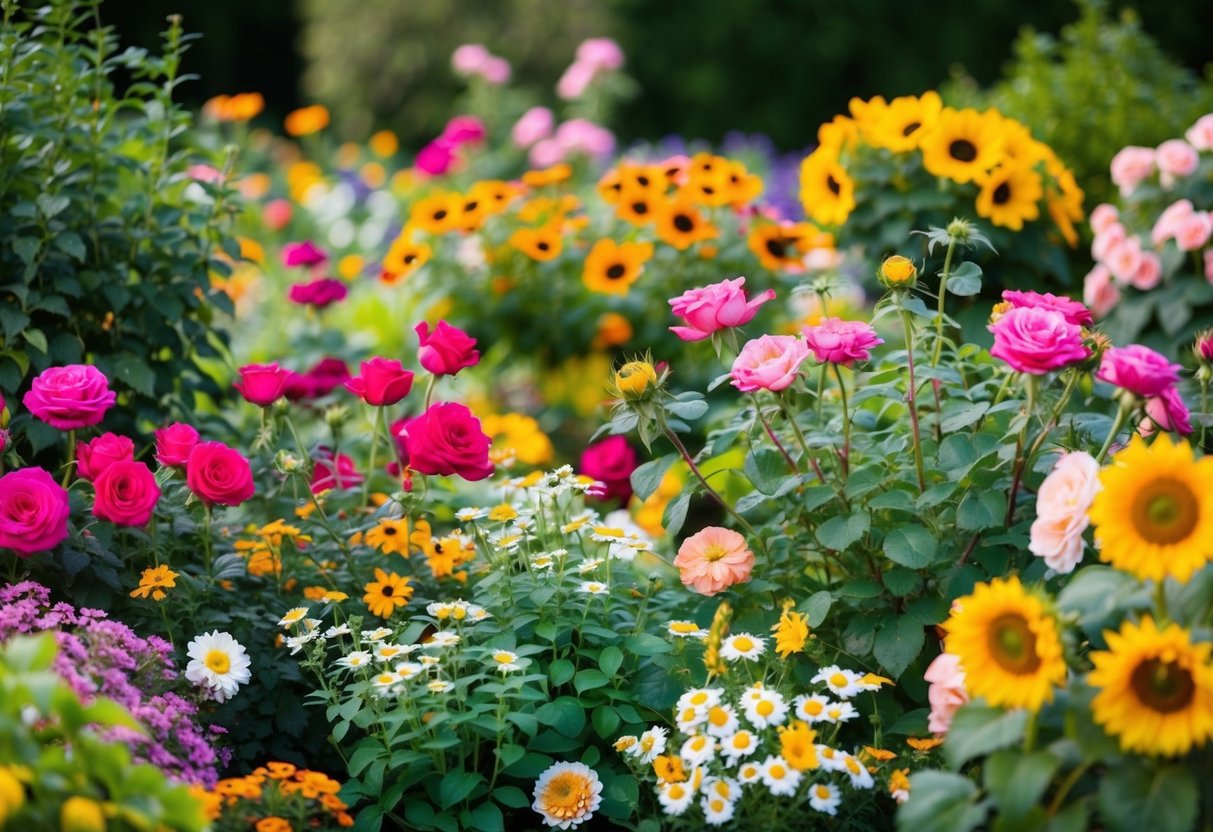
Enhancing your garden for oxygen production and flower abundance involves selecting the right plants and following best practices for nurturing growth. Choosing varieties known for their blooms and air-purifying qualities can transform your space into a lush oasis.
Plant Choices for Oxygen and Blooms
To improve both oxygen levels and flower output, start with plants that excel in both areas. Gerbera Daisy is a top choice. It’s not only vibrant with colorful blooms, but it also boosts oxygen production effectively indoors.
Another excellent option is the Peace Lily. Known for its glossy leaves and white blooms, the Peace Lily can produce oxygen 24 hours. English Ivy is also great for improving indoor air while adding greenery and potentially small delicate flowers.
Focus on a mix of these plants to balance the pursuit of aesthetic blooms and cleaner air. Their ability to filter toxins enhances your breathing environment while providing a beautiful, flower-filled view.
Best Practices for Flower Abundance
Ensuring your plants thrive involves more than just planting them. Regular watering and feeding are crucial. Use a balanced fertilizer to support both blooms and lush growth. Pay attention to your plants’ light needs—most flowering plants like Gerbera Daisy prefer bright light.
Pruning can stimulate flower production. Trim old blooms to encourage new growth and increase flower counts. For species like English Ivy, regular trimming promotes bushier growth and possible flowering.
Rotate your plants to ensure even light exposure, which helps in uniform growth and often leads to more flowers. With correct care, these practices support both vibrant blooms and increased oxygen production in your garden.
Attracting Pollinators and Promoting Biodiversity
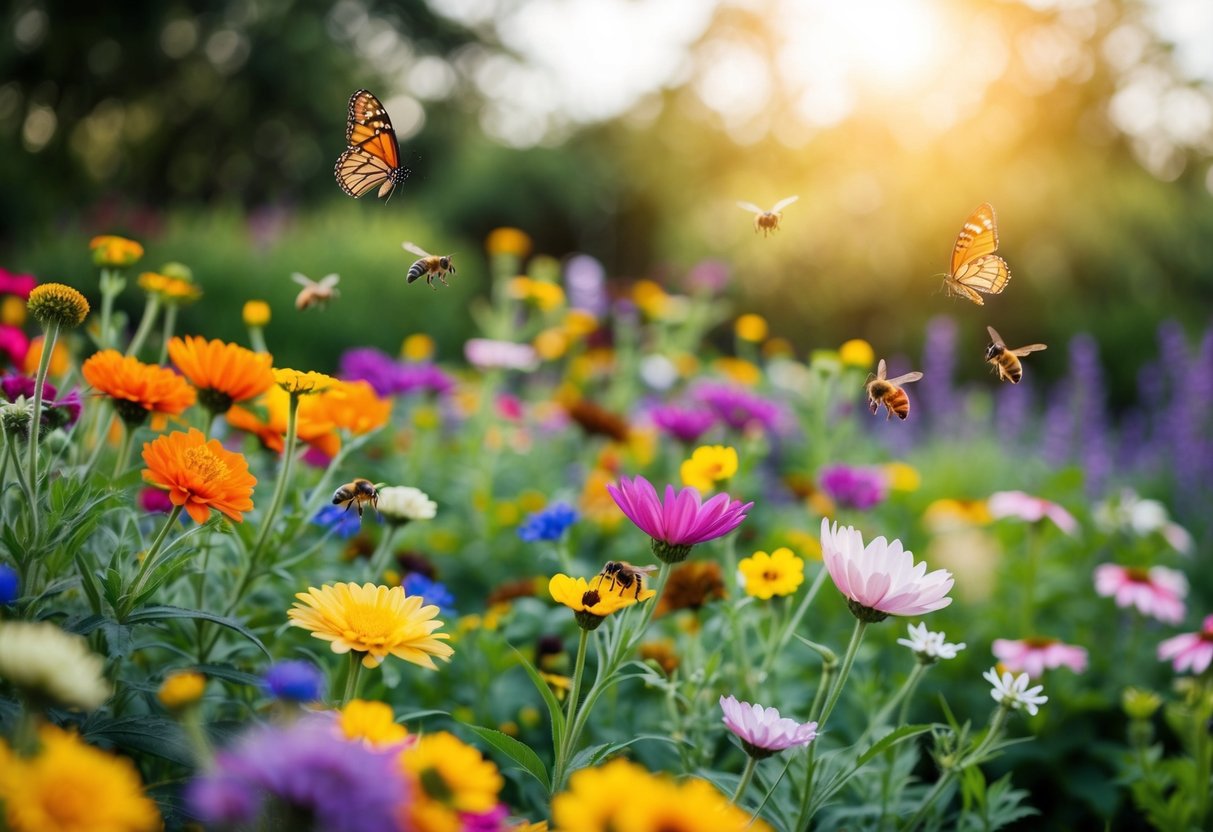
Creating a garden that attracts pollinators can increase the number of flowers and enhance biodiversity. By choosing plants that are rich in nectar and creating a supportive ecosystem, you can enjoy a lively, colorful garden.
Choosing Plants That Attract Pollinators
Selecting the right plants can make a big difference in attracting pollinators like bees, butterflies, and hummingbirds. Consider planting nectar-rich flowers with vibrant blooms such as echinacea (purple coneflower), monarda didyma (bee balm), and butterfly milkweed. These plants are known to attract various pollinators with their colorful flowers and tasty nectar.
Daylilies (hemerocallis) and dahlias also provide appealing options. You might incorporate gaillardia and phlox, as they play a big role in drawing pollinators to your garden. Adding a mix of these plants will ensure that something is always blooming, providing a steady food source for pollinators. Long bloom times are key to supporting a rich biodiversity.
Understanding the Ecosystem in Your Garden
To promote a healthy ecosystem, it’s important to consider not only the plants but also the layout and spacing. Create diverse layers in your garden by planting taller species like yarrow (achillea) and lantana alongside shorter flowers like leucanthemum (shasta daisy) and chrysanthemum. These combinations offer shelter and feeding spots.
Using native plants can be beneficial as they’re often more attractive to local pollinators. They require less maintenance and are more adapted to your area. Your garden becomes a small habitat, supporting a variety of wildlife and leading to more blossoms and growth as pollinators move around, spreading seeds and pollen. Adjust your garden environment to truly encourage pollinator visits and increase floral abundance.







